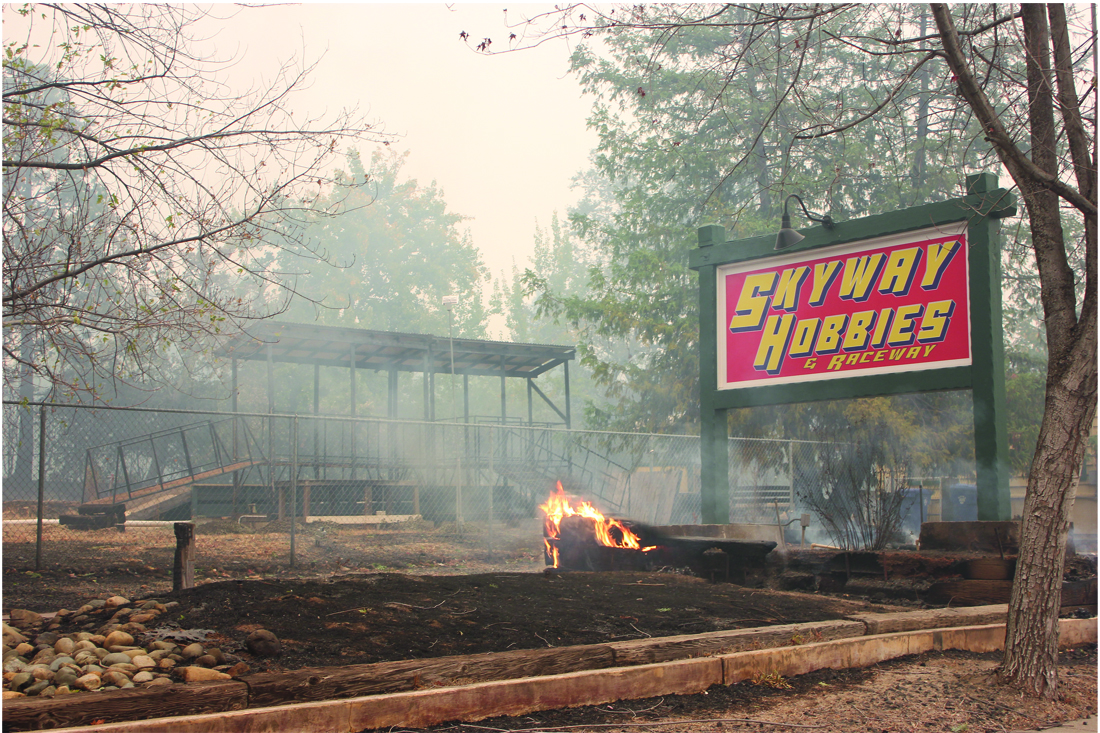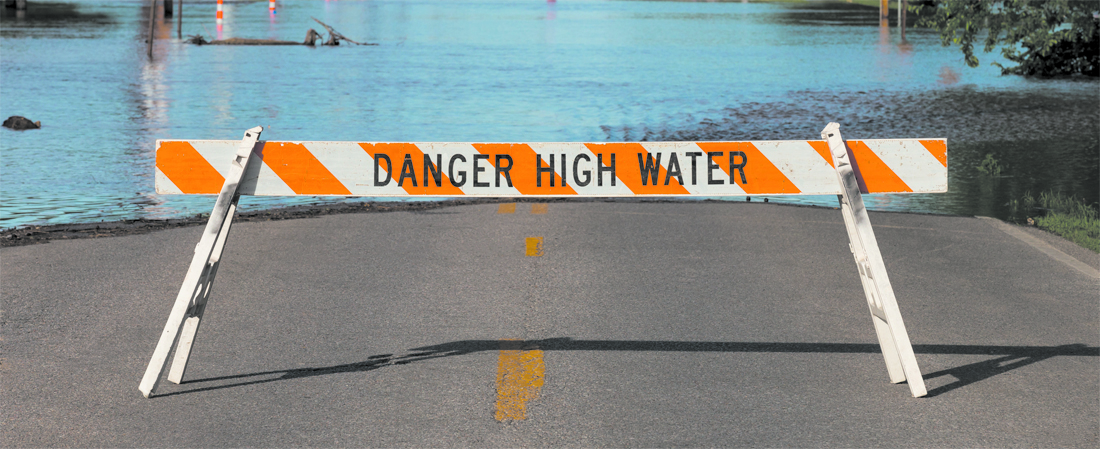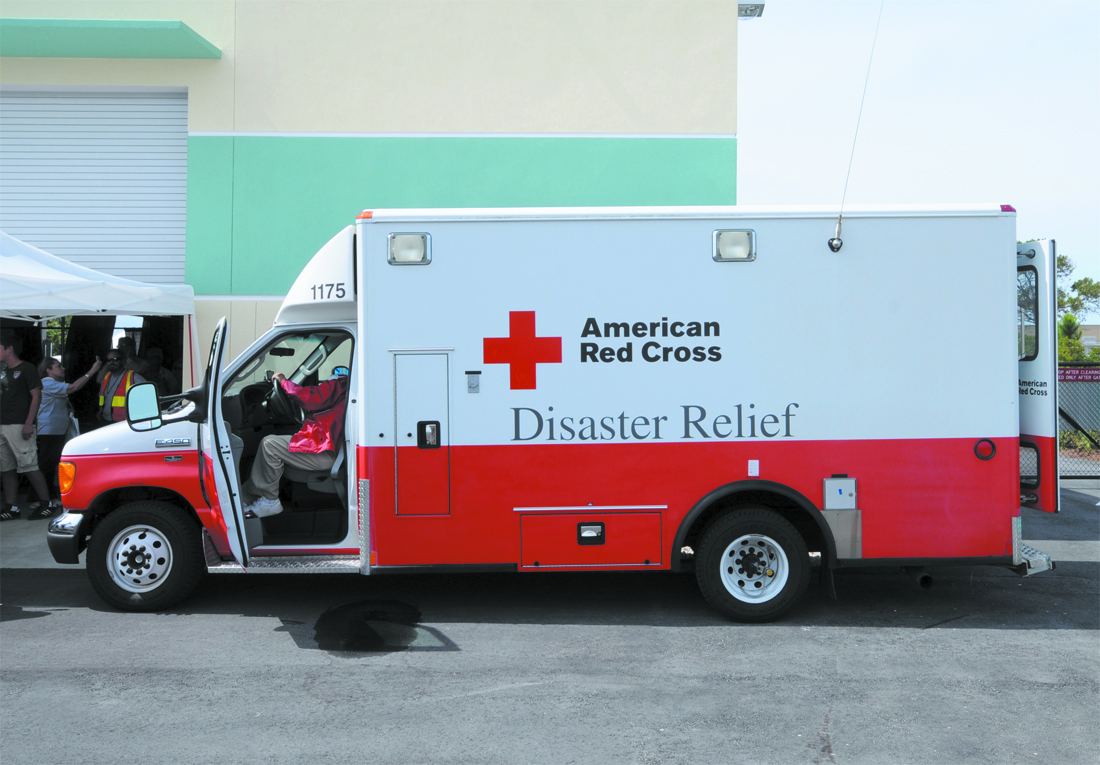
Photo by Melissa Daugherty
One snapshot of Paradise on Nov. 9, the day after the Camp Fire ravaged the town.
Climate change is here. On average, temperatures are already 1 degree Celsius warmer than pre-industrial levels.
It’s important to understand we are not helpless. We can pressure government officials to take the bold actions necessary to curb carbon emissions and to prepare our infrastructure.
California is the seventh-largest producer of crude oil in the United States, according to the U.S. Energy Information Administration. A major oil spill in Kern County and The Desert Sun’s revelations that fracking permits have doubled in recent months are a reminder that fossil fuel production still plays a big role in the state.
“If people really want to protect themselves in the long term, they need to get involved in climate action, and push local, state and county governments to make the difficult decision to stop oil and gas development in California,” said Leah Stokes, an assistant professor of political science at UC Santa Barbara who studies energy and climate politics.
In the meantime, we all have to start thinking about whether we are prepared for the impacts of warming that has already happened or that is inevitable. Global warming makes extreme weather such as fire, floods, blizzards and heat waves more intense and, in some cases, more frequent.
Being prepared is not “an achieved state,” said Samantha Montano, an assistant professor of emergency management at North Dakota State University. That’s the wrong approach because “at an individual level, our preparedness is changing literally minute to minute.”
Butte County has been through two federal disasters in as many years—the Camp Fire in 2018 and the Oroville Dam spillway crisis the year before—and thus many in the region understand the importance of emergency planning.
How prepared you are depends on where you are when disaster strikes, your relationships with other people and your information sources, among other factors. This guide offers tips and resources for how you can be more ready.
1. What to worry about and when
Here’s a timeline of what types of extreme weather are more likely in California, as well as when and how climate change may shift or alter what to expect.
July-September: Dry, hot and definitely fire season. Areas downwind of fires may be choked with smoke, as was the case in Butte County and the rest of the northern Sacramento Valley last November during the Camp Fire. Heat-related illness is another risk. More greenhouse gases trap heat in the atmosphere. That means nights cool off less, and heat builds more during the day.
October-November: Normally the start of rainy season. The period between October and April accounts for 90 percent of annual precipitation in California, says climatologist Michael Anderson with the state Department of Water Resources. However, a delayed wet season means fire risk extends longer. Heavy rains after extended dry periods, and especially after fires, can cause mudslides.
December-February: Half of California’s yearly rainfall typically happens during these months, says Anderson. Storm drains clogged with debris from the dry season can lead to urban flooding, as it did last winter in certain areas of Chico.
March-April: Usually, the wet season tends to taper off, but with climate change April might be unseasonably hot or abnormally stormy, as in 2018. Rising average global temperatures mean more evaporation, resulting in storm systems retaining more water, says Anderson.
May-June: Normally when the landscape starts drying out. A warm winter with more rain and less snow can mean the dry season starts even earlier, Anderson says. While snow sticks around, rain flows directly into waterways, leaving land to dry out sooner.

2.Throw a block party
Preparing for disasters, we often think about having enough food and water to hold out. But a significant factor is a lot less tangible: social connections.
How involved are you in your community? How far does your social network extend?
During the March 2011 tsunami that killed more than 20,000 people in Japan, those living in communities with high levels of trust and social interaction had higher survival rates, one study found. In another study by Daniel Aldrich, director of Northeastern University’s security and resilience program, researchers found that Facebook users were more likely to evacuate during Hurricanes Harvey, Irma and Maria if their friends-of-friends network on the social media site included more people in different geographic areas.
“Broader, more diverse networks give you more diverse information,” says Aldrich.
Community trust and social networks are examples of social capital. “The nice thing about social capital, like other forms of capital, is it can be built,” he says.
Cities can invest in parks, libraries and other public spaces. Individuals can take even simpler steps: Introduce yourself to your closest neighbors. Organize block parties and other neighborhood events. Attend public meetings. And join social media groups directed to your community.
3. Defend your space
Defensible space can make a property more resistant to wildfire, especially important for residents of eastern Butte County and other foothills communities at high risk.
Cal Fire recommendations include removing dead plants, pruning and creating space between flammable plants, and moving flammable objects such as firewood away from the home. These steps are one line of defense against the spread of wildfire, along with strong planning and building codes.
Among local resources to mine: the Butte County Fire Safe Council (buttefiresafe.net). The nonprofit operates a wood chipper program—an alternative to burning and hauling off brush and limbs—that is available for residents in the Camp Fire footprint.
Fire Safe Council members also can borrow a special tool called a “weed wrench” to help remove broom, an invasive and highly flammable shrub.
Defensible space does not guarantee a property will not burn, and Cal Fire recommendations appear to be written with homeowners in mind.
Renters may not be able to make changes without a landlord’s permission.
Laurie Shoemann, who oversees the resiliency and disaster recovery program at Enterprise Community Partners, an affordable housing nonprofit, says tenants should organize themselves and work with property owners to ensure a property has defensible space and other safety precautions in place.
“Residents are the eyes and ears for the building and the community,” she says.

Enterprise offers a “Ready to Respond” kit for property owners and renters on its website, enterprisecommunity.org. Renters also should purchase renters insurance.
4. Be ready for floods
With climate change, “extremely heavy precipitation events”—a lot of rain all at once—are more likely, according to a paper published last year in Nature Climate Change, a scientific journal. That means the risk for large floods is greater.
As with fires and other climate-influenced disasters, the most important thing to do in the case of flooding is to follow safety or evacuation directions from government officials.
You can also work to prevent localized flooding near your home, and you can secure your property in the case of more severe flooding that may require evacuation.
Sacramento emergency manager Daniel Bowers recommends clearing leaves from storm drains and tying down lawn furniture, among other measures. More tips are available at stormready.org.
Renters and homeowners should have flood insurance; standard renters insurance policies may not cover flooding, so you may need to buy a separate policy.
Floodwater is often contaminated and you should avoid contact with it, according to the federal Centers for Disease Control and Prevention. Flooding also can contaminate drinking water, so it’s important to store containers of clean water at your home and workplace in case of emergency. The best method for making water safe from bacterial contamination is boiling it. First, filter the water through clean fabric, a coffee filter or a paper towel and let any contents settle.
5. Evacuate!
Climate change increases the likelihood and intensity of wildfires in California, and these fires can move fast.
When officials issue evacuation orders, “you have to take and heed the directions,” said Brian Marshall, fire chief at the California Office of Emergency Services. “Time is of the essence.”
Evacuation can mean leaving town, and routes may not be predetermined. Public safety officials may choose to reverse traffic flow on highways or roadways—so-called “one-way evacuation operations”—should primary evacuation routes get clogged with traffic. They also might usher people to a location in town that is comparatively safe, as was the case for many Ridge residents during the Camp Fire. For more info, visit buttecounty.net/oem and click on the “evacuation plan and map” link.
Many places in California at high risk of wildfire lack evacuation plans. The ease or difficulty of evacuating will vary, depending on the community and conditions of the fire.
Whatever your situation, you should have your own plan. “Without a plan, you don’t know what to do in an emergency,” said Marshall.
For example, if power goes out, automatic garage doors may not open. If you can, install a backup battery, which new garage doors must have. Be ready to open the door yourself; if you’re not sure you can, park your car outside, pointed forward for easy maneuvering, with windows closed.
Follow local news outlets and Cal Fire on Twitter or Facebook, and sign up for local emergency alert systems such as CodeRED (tinyurl.com/ButteCountyCodeRED). But be aware that sometimes evacuation orders don’t come in time. If you can, invest in a battery-powered or hand-crank radio that operates when the electricity is out, so you can get weather and news updates.

If your community is on fire or flooding, even if you don’t feel threatened, the safest move is to leave. Don’t just think about yourself, but also about others trying to get out and first responders coming in, all of whom can benefit if you get out early, said Cal Fire public information officer Scott McLean.
“This time of year, we just have to all keep our heads on a swivel,” he said.
6. Staying in a shelter
After a disaster, you might not be able to return home for some time. If you are unable to stay with friends and family, you can check into a shelter.
Often these shelters are run by the American Red Cross, which coordinates in advance with community facilities willing to host disaster victims.
You can look up open shelter locations at redcross.org. Local police and fire departments also will be aware of sites.
The Red Cross does not require ID from people seeking shelter and does not ask about immigration status, said national headquarters spokesman Don Lauritzen. The organization also has said it will not allow immigration agents into a shelter without a court order.
Shelter guests are free to come and go, but must check in and out, said Heath Wakelee, a Northeastern California Red Cross public information volunteer. While there is no curfew, 10 p.m. is “quiet time,” he said.
Service and comfort animals are allowed into many shelters, but some cannot accommodate pets. Sometimes, veterinarians will take pets in for free. People who choose to stay with their pets outside a shelter may still use shelter facilities.
Shelters, however, can be hectic, and might not operate as expected. Wakelee said the Red Cross does not turn people away, but may refer them to other shelters when they are full. He said case workers ensure shelter guests have plans to stay elsewhere before the shelter closes.
Fair warning: As the CN&R reported a few months after the Camp Fire, the Red Cross started preparing to shut down its facility at the Silver Dollar Fairgrounds in Chico with a few weeks’ notice to displaced individuals, many of whom ended up on the streets.
The organization had previously assured this newspaper that the shelter would remain open as long as it was needed.
Shortly before the closure, on Feb. 1, representatives told the CN&R that people asked to leave either had plans to stay elsewhere, had declined help from Red Cross case workers or were homeless before the Camp Fire.
7. Doctor’s orders
In their 2017 book Enviromedics, Drs. Jay Lemery and Paul Auerbach write that environmental change “has been proclaimed the biggest global health threat of the twenty-first century.”
The book looks at a long list of health impacts of climate change, including increases in heat illness, greater spread of diseases, poor air quality and declining access to clean water.

Photo courtesy of NVADG
Under supervision of a veterinarian, NVADG volunteer Janice Rosene treats a dog injured during the Camp Fire.
If you have any health problems, climate change could make them worse. Talk to your doctor about whether you should change your asthma or allergy care during pollen season or heavy wildfire smoke. Be aware of any medications, including for psychiatric conditions, that make you more sensitive to heat.
One thing to watch for, especially during the North State’s already sweltering summers, is heat illness. By the end of the century, average daily maximum temperatures could increase by 10 degrees, according to UC Davis researchers.
Be alert for symptoms of heat exhaustion and more severe heat stroke. Get to a cooler location, ideally somewhere with air conditioning. Drink water, and if symptoms don’t subside in 15 minutes, go to the hospital.
Heat stress can be deadly, leading to problems such as kidney failure. The National Kidney Foundation recommends against using nonsteroidal anti-inflammatory drugs such as ibuprofen when you know you’re going to be exposed to heat.
Exposure to heat is a major health risk for people who work outside and in high-heat indoors, such as farm workers, landscapers and factory workers.
If you pack an emergency “go-bag,” include extra supplies of your prescription medications. If you have insurance, see if you can move up your refill date to have extra pills on hand. You can also ask your doctor to prescribe an additional one-time supply. Some insurance providers may have special programs to help disaster victims get prescription medications.
For more on this topic, see Healthlines, page 12.
8. Get trained
Look for free and low-cost disaster preparation and response training, as well as opportunities to participate in coordinated disaster response. Joining these groups can help better prepare yourself, your family and your community.
CERT (Community Emergency Response Team): This federally recognized program trains volunteers for a range of disasters, from basic individual response to coordinated response by teams after large-scale disasters. You likely will have to travel out of the region for training. The Sacramento area has a number of CERT teams offering classes and volunteer opportunities throughout the year. More info at saccountyares.org/links/cert.
Disaster preparation and response training helped save countless pets and livestock during the Camp Fire. Among the groups that rescued and cared for animals after the evacuation is the North Valley Animal Disaster Group (NVADG).
In addition to those efforts, the nonprofit educates the public on disaster preparedness geared toward pet owners by giving presentations and attending safety fairs and other community events. Learn more at nvadg.org.
For those looking for volunteer opportunities, NVADG is hosting a two-day training session on Jan. 18-19.
ARES (Amateur Radio Emergency Service): Ham radios and other alternative communication methods become indispensable when cell networks get interrupted, as was the case during the Camp Fire. Locally, there’s the Golden Empire Amateur Radio Society (GEARS), a nonprofit whose roots trace back to the 1930s. For information about its meetings and membership, visit gearsw6rhc.com.
Because the rural North State lacks many of the emergency preparedness training opportunities found in major metros, it is especially important to be self-reliant. Butte County Public Health recommends residents put together a disaster supply kit and offers an online checklist. Suggested items include important documents, complete changes of clothing for each family member, and keeping a full tank of gas at all times.
Residents also should create a family emergency plan that, among other things, identifies an individual in a safe zone out of the area that everyone should contact if separated. Learn more at tinyurl.com/EvacList.
Melissa Daugherty contributed to this story.
